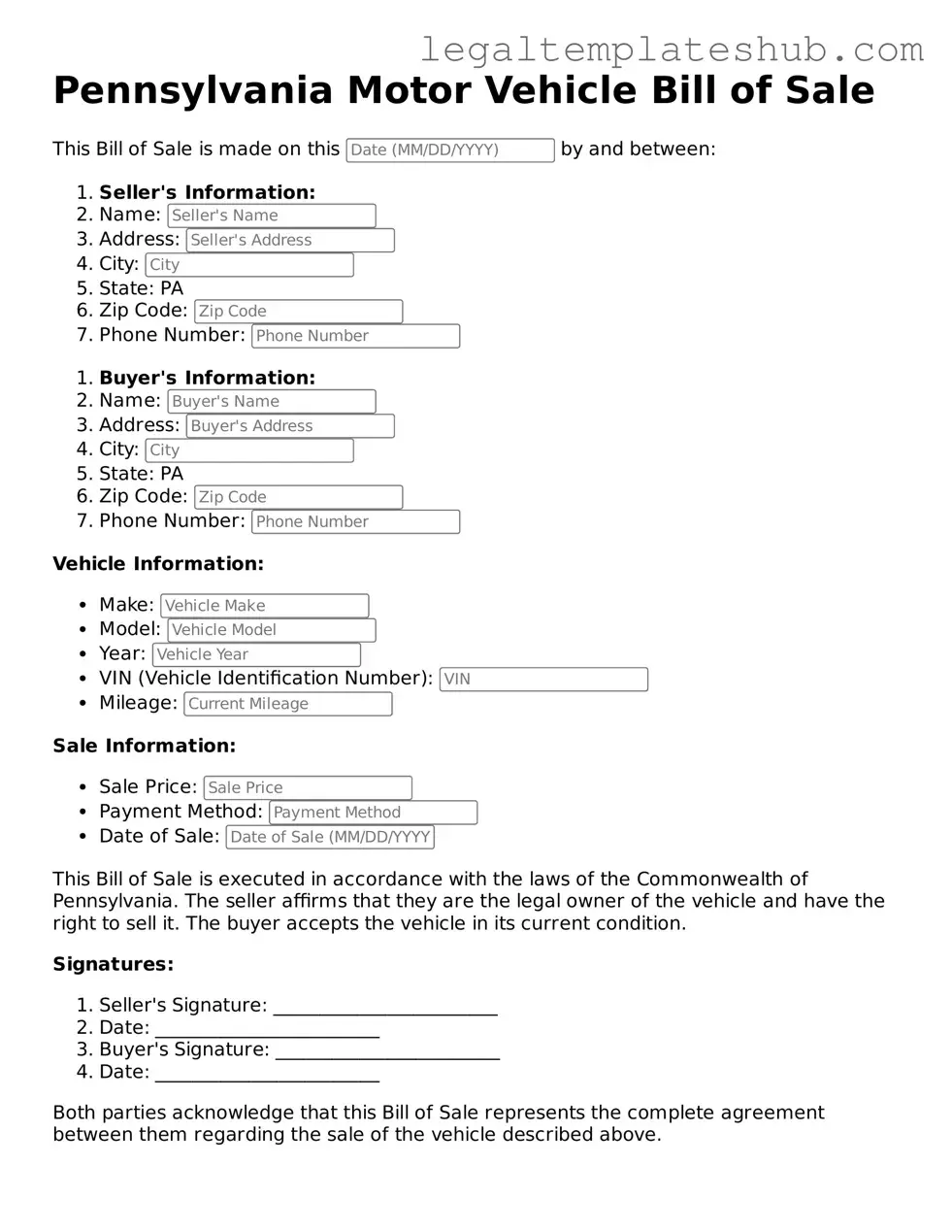Printable Motor Vehicle Bill of Sale Document for Pennsylvania
The Pennsylvania Motor Vehicle Bill of Sale form serves as a crucial document that records the transfer of ownership for a vehicle between a seller and a buyer. This form not only protects both parties by providing proof of the transaction but also helps in ensuring that all necessary information is documented accurately. To facilitate a smooth transfer, it's essential to fill out this form correctly; click the button below to get started.
Access Editor
